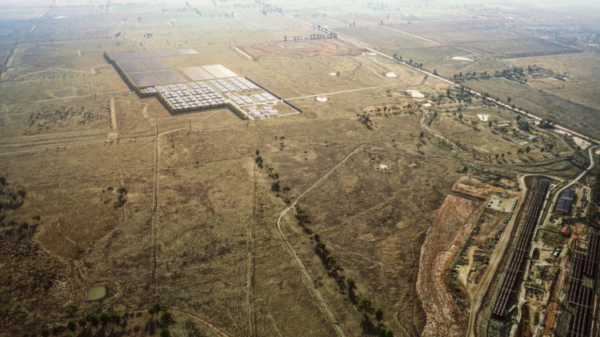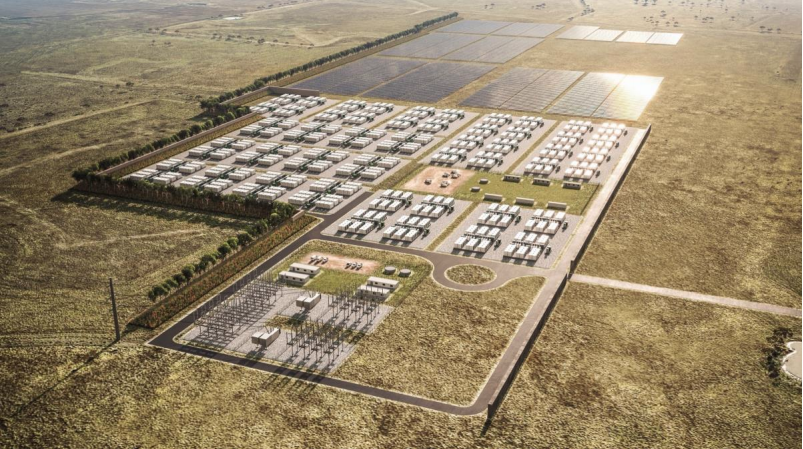The Melton Renewable Energy Hub, as its named, will be located next to the Sydenham terminal station and will be able to connect to the state’s main 500kV transmission backbone.
The big battery project, the largest proposed for the state by a long shot, has been fast tracked by the Victorian government under its planning scheme amendment, a pathway for significant state projects. The company hopes to reach financial close by the second quarter of 2022, with production to begin by the second half of 2023 to support the network over that summer.
“We see this as a longterm piece of energy infrastructure that will play a range of different roles as the decade rolls through to a range of different customers,” Syncline Energy’s CEO, Phil Galloway, told pv magazine Australia.
The Australian company will own and operate the project, which will also include a 12.5 MWp solar farm to supply the battery’s ancillary cooling loads and ensure low cost, ‘net-zero’ operations.
Project location
The project’s site is more than 90 hectares, which Galloway says can deliver safe battery cube spacing and buffer areas that would not normally be possible on the urban fringe of a major city. He secured the enviable site after his team spent a year driving between Victoria’s various substations and speaking to councils, gathering together a list of 20 potential locations. “This was by far number one,” he said.
One of the reasons for that is the site lays at the junction between three of Victoria’s emerging Renewable Energy Zones, allowing the Melton Renewable Energy Hub to connect to each of those separate zones via the state’s 500kV transmission “backbone.”

Syncline Energy Pty Ltd
Battery chemistry
The chemistry of the proposed big battery is yet to be finalised, though it will be of the lithium variety.
Galloway said Syncline is also looking to use ‘second life’ batteries from cars and busses in its energy storage array. When Syncline’s battery cells reach the end of their lives, Galloway plans to build systems for recovering the lithium, nickel and cobalt on site. Key to that is using a narrow range of chemistries to optimise the recovery process, Galloway noted.
This, he says, is part of a “product stewardship approach” the company plans to take.
“We need to be responsible for that whole cycle,” he said, adding that he would like to see the storage industry become more mature about the OHS (occupational health and safety) around its operations.
Grid forming & services provided
The project intends to integrate grid-forming technologies, though Galloway said he is still waiting for clarity around the national electricity rules for grid-forming services, which are still being formed. This has been earmarked as a top priority for network operators, with regulation expected to become clearer in the coming year.
Likening it to the model of data centres, Galloway said “storage as service” will form the core of the project’s business model. That is, he is looking at leasing battery space with the project.
What next
AEMO has registered the Melton Renewable Energy Hub as an intending market participant, with the project already completing the preliminary connection enquiry stages. Its connection application process is underway with the grid capacity studies complete.
Syncline Energy is behind Victoria’s 110 MW Bannerton Solar Farm, as well as two commercial geothermal projects at Warrnambool, and has developed hybrid microgrids in the Northern Territory and Western Australia.
This content is protected by copyright and may not be reused. If you want to cooperate with us and would like to reuse some of our content, please contact: editors@pv-magazine.com.









6 comments
By submitting this form you agree to pv magazine using your data for the purposes of publishing your comment.
Your personal data will only be disclosed or otherwise transmitted to third parties for the purposes of spam filtering or if this is necessary for technical maintenance of the website. Any other transfer to third parties will not take place unless this is justified on the basis of applicable data protection regulations or if pv magazine is legally obliged to do so.
You may revoke this consent at any time with effect for the future, in which case your personal data will be deleted immediately. Otherwise, your data will be deleted if pv magazine has processed your request or the purpose of data storage is fulfilled.
Further information on data privacy can be found in our Data Protection Policy.